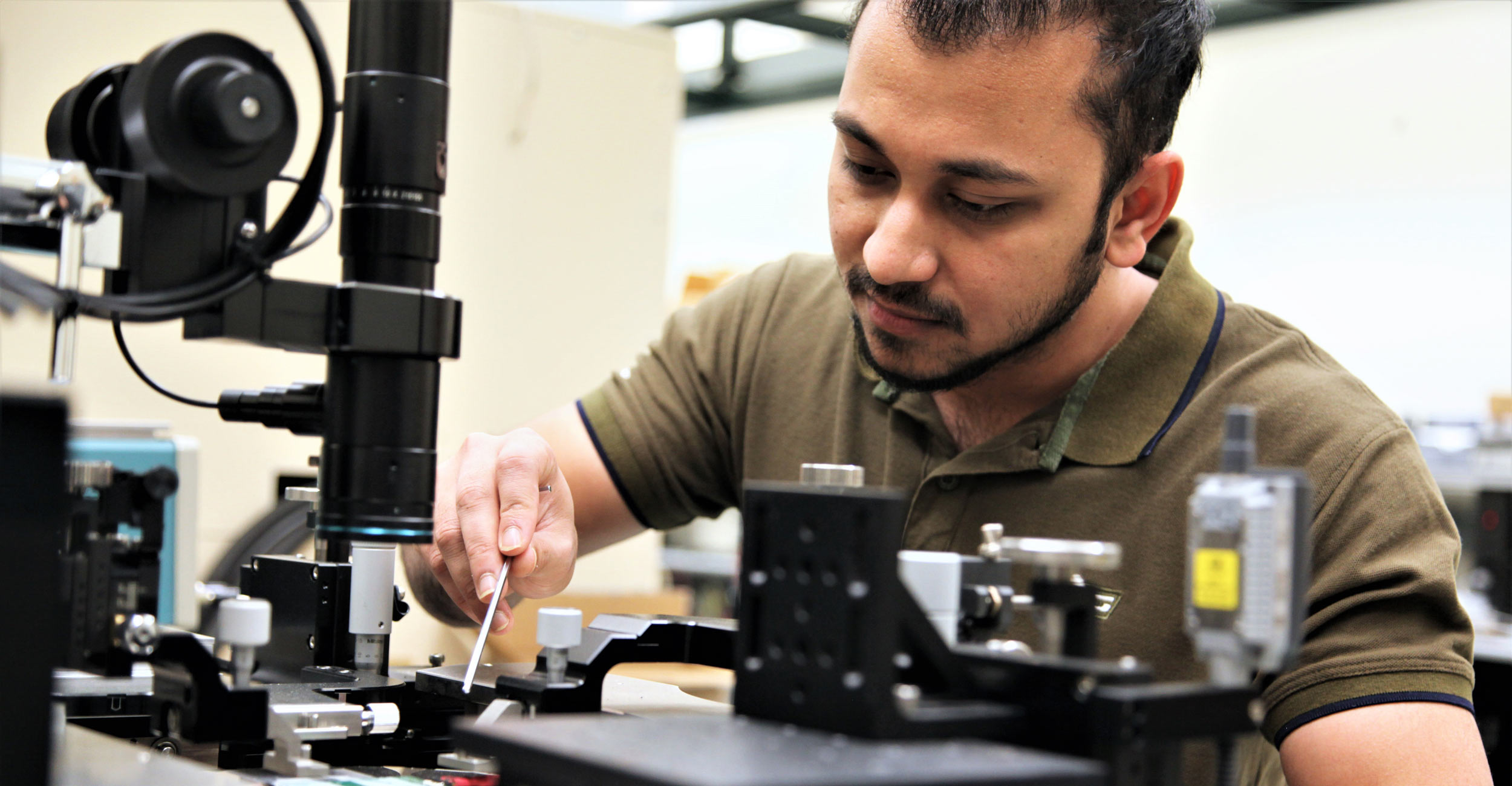
Researchers from OSU developing the next form of communication with the moon and beyond
Monday, January 10, 2022
Media Contact: Kristi Wheeler | Manager, CEAT Marketing and Communications | 405-744-5831 | kristi.wheeler@okstate.edu
Space — the final frontier.
We may never truly understand everything beyond Earth’s atmosphere. However, the deeper humankind delves into the outer reaches of the universe, the more critical it will become to have clear, real- time communication and data transfer between groups countless miles away.
“The last thing you’d want is to be on the surface of the moon and suffer a complete loss of communication.”
The sentiment from Dr. John O’Hara couldn’t be more accurate. O’Hara is a member of a team of researchers from the School of Electrical and Computer Engineering (ECE) at Oklahoma State University who are partnering with researchers from around the country to develop next-generation, space-based communication systems.
Drs. Sabit Ekin, Wooyeol Choi and Ickhyun Song, all from ECE, join O’Hara and other researchers from the Oklahoma Space Grant Consortium, OSU Unmanned Systems Research Institute (USRI), the University of Oklahoma, the University of Tulsa and NASA Goddard Space Flight Center on the endeavor.
The group recently received a $1.1M grant from NASA to develop a hybrid radio frequency (RF) and optical communication system, which the team hopes will account for shortfalls experienced in both communication systems individually, such as low data rate transmission and network reliability issues.
The funding will be used to develop both theoretical and experimental solutions that will seamlessly integrate both communication models into a network with satellites — such as SpaceX’s Starlink project or NASA’s communications systems — as well as the Lunar Gateway, which is being developed for projects like the Artemis lunar platforms, which is NASA’s newest venture to return to the moon.
Once extensive research was conducted by the team, they arrived at the conclusion that a hybrid communication system would provide the best possible solution for the large volume of scientific data that will be transmitted during future lunar missions.
The team hopes to combine the reliability of RF communication with the high capacity of optical systems into a system that can easily and intelligently switch between communication architectures in response to any kind of interference. An example being changing atmospheric conditions, which contribute to significant signal loss.
This project will undoubtedly encounter obstacles and questions that will have never been asked before. Creating a method for the seamless switching between the two systems and finding solutions to the inherent limitations of both systems are all things that the team will have to identify and provide solutions for if the system is to be successful.
“You want high speed communication with robust reliability,” Ekin said. “However, the challenge of this system is even if we are able to develop a reliable optical system, how do we manage a switch to RF if a cloud were to pass over or we encountered a signal degradation due to satellite motion or atmospheric turbulence?”
There are numerous examples of terrestrial RF and optical systems, which will provide a good knowledge base to reference. However, those systems are not trying to coexist in the same communication architecture and provide the ability to transition from one to another. The switching system will need to be equally intricate and robust to adequately handle the task of recognizing and carrying out these transitional moments.
The researchers at OSU have set up small-scale systems of each type in the TWISTER (Transformative Wireless Innovative Science and Technology and Engineering Research) lab.
This will allow for preliminary testing, which will hopefully provide valuable insight into the basic interaction and integration of these two systems. It will also provide a testing ground for possible solutions to any number of questions or obstacles the team might encounter.
Each phase of the communication chain will present its own challenges. The span from Earth’s surface to the low-Earth orbit satellite system will likely be the segment where signal loss and switching will be of paramount importance.
The satellite system to the Lunar Gateway will have to overcome the shear distance between the two points and will require pinpoint signal aiming between objects moving at tens of thousands miles per hour. And finally, from Gateway to the lunar surface will provide challenges in signal targeting and receiving.
“Once the LunarCom problems have been solved, I think it will go a long way to building a foundation of knowledge that can then be applied to the eventual manned exploration of Mars,” O’Hara said.
The group believes that this project could provide a new paradigm in communications both on Earth and beyond.
The opportunity that this joint project is providing the OSU researchers is not one that is taken for granted.
“I’ve worked on terrestrial communication for many years, but I never thought that I would be using that knowledge to develop a communication system for the moon,” Ekin said. “But I’m very excited at the prospect of creating something that NASA could use in that aspect or beyond.”
For O’Hara, the project serves as a realization of an interest that he never thought would come.
“Believe it or not, in the late ’90s I was a member of a senior design project team that was investigating deep space travel to one of the moons of Jupiter and my role was to head research of a possible optical communication system for that mission,” O’Hara said. “So, this has always been an interest of mine and I never really thought it would happen, but I’m glad that it is and that I get to play a part in research that could change the way we communicate here on Earth, or to other worlds.”
Photos by: Kristi Wheeler
Story by: Jeff Hopper | IMPACT Magazine
